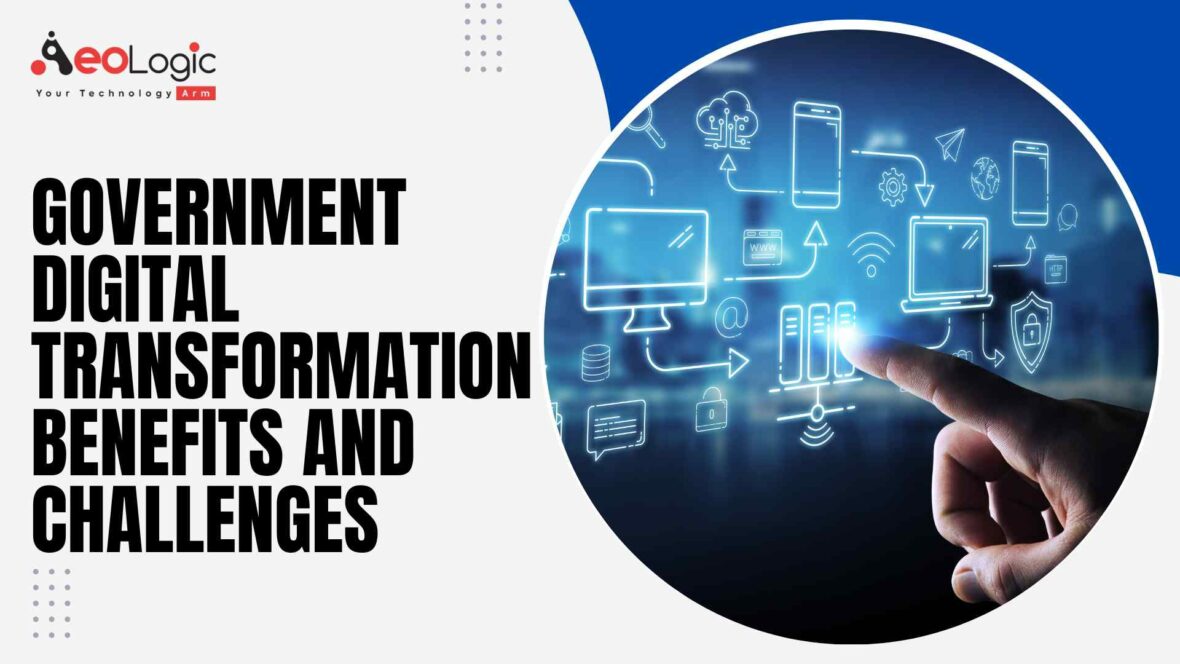The government is one of the largest and most complex organizations in the world. So, it’s no surprise that the government is also one of the slowest to change and adapt. However, this is starting to shift as more and more agencies are beginning to invest in digital transformation. Digital transformation is the process of using technology to radically improve performance or reach objectives. In other words, it’s using technology to do things better, faster, or differently. When it comes to government, there are a number of potential benefits of going digital. But implementing digital transformation at such a large scale is not without its challenges. In this blog post, we will explore both the benefits and challenges of government digital transformation.
What is Government Digital Transformation?
In order to keep up with the ever-changing digital landscape, governments around the world are turning to digital transformation. Government digital transformation is the process of using digital technologies to redesign and improve government services.
This can include anything from adopting new software to streamline government processes, to using data analytics to improve decision-making.
Digital transformation can bring a number of benefits to government organizations, including increased efficiency, transparency, and citizen engagement. However, there are also some challenges that need to be considered, such as data security and privacy concerns.
With careful planning and execution, digital government transformation can help organizations meet the needs of today’s digital citizens.
Benefits and Challenges of Government Digital Transformation
Top 5 Benefits of Government Digital Transformation
Government digital transformation can bring many benefits to both government organizations and citizens.
Here are the top five benefits of government digital transformation:
- Improved citizen engagement: Government digital transformation can help improve citizen engagement by making it easier for citizens to access government services and information.
- Increased efficiency and effectiveness: Government digital transformation can help increase the efficiency and effectiveness of government organizations by improving communication and collaboration between employees and departments.
- Cost savings: Government digital transformation can help save money by reducing the need for paper documents and physical office space.
- Better decision-making: Government digital transformation can help improve decision-making by providing employees with better access to data and analytics.
- Improved security: Government digital transformation can help improve safety by providing employees better access to security features and tools.
Also Read: How to Choose The Right ERP For Digital Transformation?
The Challenges of Government Digital Transformation
The challenges of digital transformation in government are numerous and varied. They include everything from the need to update aging infrastructure to the challenge of managing massive amounts of data.
Top 5 Challenges of Government Digital Transformation
Here are some of the most pressing challenges facing government agencies as they undergo a digital transformation:
- Updating aging infrastructure: Many government agencies are using legacy systems that are no longer supported by the vendor. This poses a significant security risk, as well as making it difficult to take advantage of new technology innovations.
- Managing massive amounts of data: The volume of data generated by government agencies is growing exponentially. This presents a major challenge in terms of storage, management, and analysis.
- Improving cybersecurity: As government agencies move more of their operations online, they become increasingly vulnerable to cyberattacks. Cybersecurity must be a top priority in any digital transformation initiative.
- Enhancing citizen engagement: In the era of social media, citizens expect to be able to interact with their government electronically. This requires government agencies to rethink how they communicate and engage with citizens.
- Streamlining processes: One of the main goals of digital transformation is to streamline processes and make them more efficient. This can be challenging in a complex organization like a government agency, where there may be multiple stakeholders with different agendas.
Benefits of Government Digital Transformation for Employees & Citizens
Government digital transformation can bring many benefits to agencies, employees, and citizens. By improving communication and collaboration, automating processes, and increasing transparency and accountability, government digital transformation can help agencies save time and money while improving services.
Employees can benefit from government digital transformation by having easier access to information and tools they need to do their jobs. Automating repetitive tasks can free up employees’ time to focus on more important work. And when agency processes are more efficient, employees are less likely to experience job burnout.
Citizens can also benefit from government digital transformation. When agencies provide better online services, it’s easier for citizens to access the information and assistance they need. Increased transparency can also build trust between citizens and their government.
Also Read: The Importance of Digital Transformation for the Industry
How to Implement Government Digital Transformation
Government digital transformation can help agencies meet these challenges by modernizing legacy systems, improving data management, and adopting new technologies like cloud computing, artificial intelligence (AI), and blockchain.
Here are some tips for successfully implementing government digital transformation:
- Define the goals of your digital transformation initiative: What are you trying to achieve? What pain points are you trying to address? Answering these questions will help you prioritize your initiatives and make sure everyone is on the same page.
- Create a cross-functional team tasked with leading the initiative: This team should include people with expertise in technology, change management, process improvement, and project management.
- Establish clear success criteria: upfront and measure progress throughout the initiative. What metrics will you use to determine whether your digital transformation initiative is successful?
- Communicate early and often with employees and citizens: Explain the rationale for the initiative and what it will mean for them. Share progress updates regularly to keep everyone informed and engaged.
- Be prepared to make changes to your organizational structure and processes: Government digital transformation will require changes to how work gets done. Make sure you have a plan for addressing these changes.
- Invest in training for employees: They will need to learn new technologies and processes. Consider using outside experts to provide training on specific topics.
- Adopt agile methodology: Government digital transformation initiatives are complex and dynamic. Agile methodology can help you manage these initiatives effectively by breaking them down into smaller, manageable pieces.
- Use pilots to test new ideas and technologies: before rolling them out broadly. This will help you avoid costly mistakes and ensure that new solutions meet the needs of your agency.
- Be patient: Government digital transformation takes time and cannot be accomplished overnight. Expect bumps in the road and be prepared to adjust your plans as needed.
- Learn from your mistakes: Government digital transformation is an iterative process. Be prepared to learn from your mistakes and use what you’ve learned to improve future initiatives.
Conclusion
Government digital transformation can offer many benefits, including improved efficiency and effectiveness, but it also comes with challenges. As governments continue to digitize, it will be important to keep these potential benefits and challenges in mind in order to make the most of the opportunities that digital transformation presents.
If you are planning to integrate digital transformation into your business, our experts can help you materialize your vision. Please get in touch with us.
Related Blogs:
- How AI/ML Can Change the Public Transportation Industry
- Transforming Business With Digital Technology in the Oil Palm Industry in India
- Importance of Digital Asset Management in the Retail Industry
- How AI is Transforming the Agriculture Industry
- 10 Ways to Use Artificial Intelligence to Improve Business Processes
- The Future of IoT Technology in Convenience Stores
- Building Manufacturing Resilience Through AI and ML






